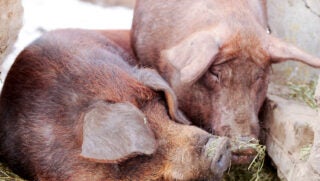Last week at the 2017 Commodity Classic in San Antonio, Texas, we posed the question to several companies, “In this current economic climate, what is your company focusing on to improve a grower’s bottom line?” We had some great conversations at America’s largest farmer-led, farmer-focused convention and trade show and wanted to share several responses with you:
John Deere:

“You are going to see some focus on John Deere and connected to you and what that means to each individual producer’s operation and the desired outcome that they want to accomplish on their farm. So as you go through the booth, you’re going to have a chance to really start coming from the prepared side of it — see our new field cultivator, and then move into planting and seeding and we have some exciting new products in that space with our air seeder cart, and then as you move into the season what do you want to do with spray, protect, and nurture and so we are excited to have our carbon fiber boom here,” said Beverly Flores, Media Relations Manager, John Deere. “Then obviously as you go into harvest — really kind of that score sheet at the end of the season — how did all those decisions play out for the grower throughout the season and as we are looking at it, how can we help bring together equipment, technology, and our dealer support — so really bringing that all together in a seamless manner.”
K·Coe Isom:
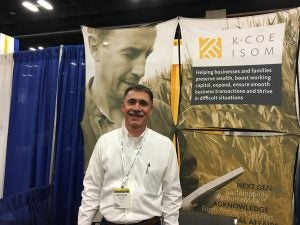
“This week we are obviously in the middle of tax season, so its a little bit after the fact. Probably the better time to focus is from this point forward and get into tax planning, and that’s when we can help manage the income, manage things where we can help manage the taxes,” said Sam Sterling, Business Development, K·Coe Isom. “In the environment we are in right now, actually what we are starting to see is a little more stability so I don’t say people are optimistic, but cautiously optimistic, so helping them get their hands around things to where they can hopefully have a good year.”
Dow AgroSciences:

“We know that nitrogen is one of the biggest inputs into any operation so protecting that investment is incredibly important, not only for an economic purpose but from an environmental standpoint. We know you have to have a return on investment based on the current farm economy so when we looked at all of our studies in 2015, we saw that Instinct and N-Serve, our two nitrogen stabilizers — N-Serve that works with anhydrous ammonia and Instinct which works with urea, UAN, and manure — had an overall $21 increase in terms of revenue so that’s an economic benefit,” said Kenny Johnson, Nitrogen Stabilizer Product Manager, Dow AgroSciences. “From an environmental standpoint in 2016 we earned the EPA Green Chemistry award which is an award given by the EPA that says that we provide both an economic and environmental benefit to growers.”
Kubota:
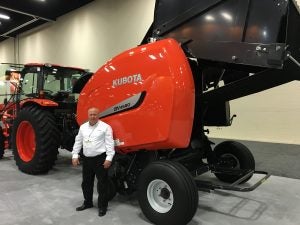
“I think the biggest thing for us this year is the introduction of our new M7 Series tractors, but then our new 5×6 baler, which really puts the Kubota products at what the farmers and ranchers are really demanding and helps us fill out our line-up in that product range.” David Palmer, Senior Product Manager Implements, Kubota. “One of the things about the Kubota baler, this baler was designed specifically for our types of crops here in North America, especially in the U.S. market, where we are seeing a big trend into shifting away from dry grasses into silage crops and this particular baler is designed to be able to handle both types of those crops. The reason silage is really growing rapidly is it is a much more efficient feed for producers to use with their animals. If you take a beef producer, he’s looking for a quality of feed that will maintain that mother cow as she’s going through the winter or raising that calf, as well as when those calves come out and go into the feedlot. What type of feed can he come up with that he’s already got to be able to put more pounds on that calf? By utilizing silage grasses with their current grasses versus their dry hay, they are able to have a much more higher nutrient level to be able to feed their animals.”
DuPont Pioneer:
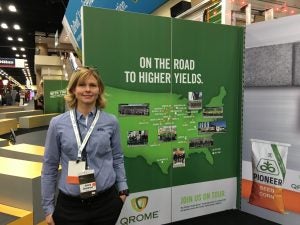
“Really excited about some of what we are seeing from the yields from the A-Series soybeans — it is certainly one way to help with profitability — getting the most out of the acre,” said Jenny Goodman, Global product Manger Corn and Soybean Herbicides, DuPont Pioneer. “Along those lines a lot of people saw that last year they didn’t get the weed control that they wanted or needed and there’s a concern that might be one of the areas that limits some of the opportunity for yields as well this year, so there’s a lot of discussion around what’s the right plan and what’s really needed on my acre and my situation — a focus on that locally proven weed control program and really making sure we have the information relevant to an individual grower on the right way to use the products available to them based on the situation they are facing.”
Can-Am:
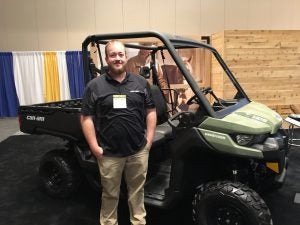
“What is nice about Can-Am is that they offer quality machines at a wide range of prices, packages, engine sizes. If you are a farmer looking to upgrade to a side-by-side, you know how important those can be and what a useful tool they are on the market. Can-Am did just come out with a Defender with HD5 motor in it so the base package will start under $10,000. Which is nice too is you can add accessories to the machine as you need. Whether you need a snowplow or track kits or more racks, you can add that in as you need it so there are affordable options to accessorize your machine,” said Andrew Howard, Communications Manager, Can-Am. “Defenders have 10 1/2 gallon fuel tanks — very good gas mileage — so that will help when you are riding around, pulling, that type of thing. What’s nice too about Defenders is serviceability is great — 200 hours before you need take it in — and if you’re handy the engine has a hot and cold side so you can change out filters, grease the machine as needed, so you can maintain the machine and get it a good entry price as well.”
Case IH:
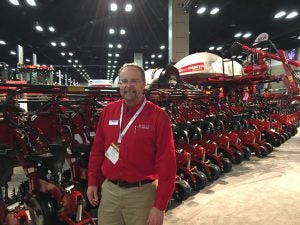
“Right now just before the spring season, they are looking at efficiencies that they can gain, not only from their current product, but maybe future product. What that means is they are going to crawl into that tractor cab, maybe here in less than 30 days, and put that seed into the ground. So a third of the cost in putting that seed into the ground is input costs — seed, fertilizer, chemicals — so how can we look at variable rate technology to hopefully help in decreasing those input costs but to maximize that yield potential,” said Leo Bose, AFS Marketing Manager, Case IH. “So with our precision farming suite or portfolio of products we can offer on this Early Riser planter we are looking at precision planting technologies to drive not only that overall productivity but efficiency gains.”
Monsanto:
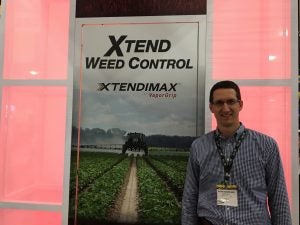
“We’re really excited to now provide farmers an opportunity with another tool in weed control especially for tough-to-control weeds. The approval of XtendiMax With VaporGrip is a dicamba herbicide and dicamba has been out for a long time now, but farmers know that this will really help them control tough-to control weeds,” said Ryan Rubischko, North America Dicamba Lead, Monsanto.


